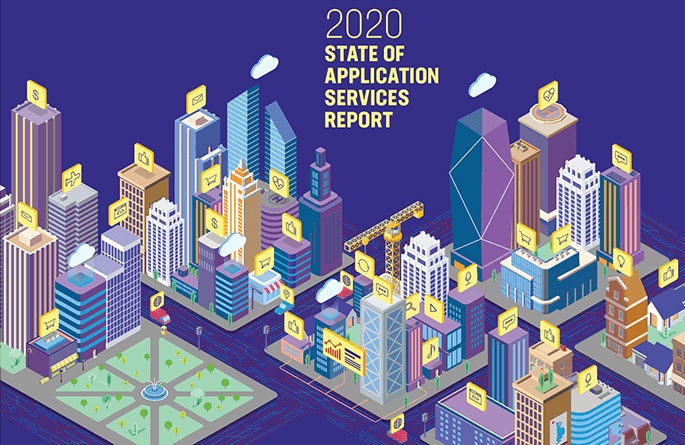Many organizations are starting to realize the benefits of increased scale and velocity of application deployment in their businesses, according to the 2020 State of Application Services report from F5 Networks.

This value, however, can bring significant complexity as organizations maintain legacy infrastructure while increasingly relying on multiple public and private clouds, implement modern application architectures, and face an evolving and sophisticated threat landscape.
At the same time, organizations are adopting more application services designed to accelerate deployment in public cloud and container-native environments, like service mesh and ingress control. Survey data indicates this trend will accelerate as organizations become proficient in harnessing the data their application ecosystem delivers — creating advanced analytics capabilities and better business outcomes.
"Applications are not just the most valuable asset in the modern enterprise, they are the vehicle organizations rely on to deliver differentiated digital experiences to their customers," said Kara Sprague, EVP and GM, BIG-IP at F5. "This year’s report explores the ways application services are an increasingly critical component at each stage of the application lifecycle. From the code that makes up the business logic of an application to the experience on an end user’s device, application services ensure businesses can build, deploy, and manage applications across environments securely and at scale."
The report — which reflects input from nearly 2,600 respondents globally across a range of industries, company sizes, and roles — shows that as companies manage legacy, multi-cloud, hybrid-cloud, and modern architectures to deliver applications, their requirements for app services are also evolving. To address limited skill sets and integration challenges, organizations are choosing open ecosystems that offer standardization.
The report examines 5 key findings:
Digital Transformation
80% of organizations are executing on digital transformation — with increasing emphasis on accelerating speed to market.
As organizations progress through digital transformation initiatives, IT and business process optimization initiatives mature. Many organizations have moved beyond the basics of business process automation and are now scaling their digital footprint with cloud, containers, and orchestration. This in turn is driving the creation of new ecosystems and massive growth in API call volumes.
Multi-Cloud
87% of organizations are multi-cloud and most still struggle with security.
Organizations are leveraging the public cloud to participate in industry ecosystems, take advantage of cloud-native architectures, and deliver applications at the speed of the business. However, organizations are much less confident in their ability to withstand an application-layer attack in the public cloud versus an on-premises data center. This discrepancy illustrates a growing need for easy-to-deploy solutions that can ensure consistent security across multiple environments.
Automating the Network
73% of organizations are automating the network to boost efficiency.
Unsurprisingly, given the primary drivers of digital transformation — IT and business process optimization — the majority of organizations are automating the network. Despite challenges, organizations are gaining proficiency and moving toward continuous deployment with more consistent automation across all key pipeline components: app infrastructure, app services, network, and security.
Cloud Native
69% of organizations are using 10 or more application services.
As newer cloud-native application architectures mature and scale, a higher percentage of organizations are deploying related app services such as ingress control and service discovery both on premises and in the public cloud. A modern application landscape requires modern app services to support scale, security, and availability requirements.
IT Ops and DevOps
63% of organizations still place primary responsibility for app services with IT operations, yet more than half of those surveyed are also moving to DevOps-inspired teams.
Operations and infrastructure teams continue to shoulder primary responsibility for selecting and deploying application services. However, as organizations expand their cloud- and container-native app portfolios, DevOps groups are taking more responsibility for app services.
